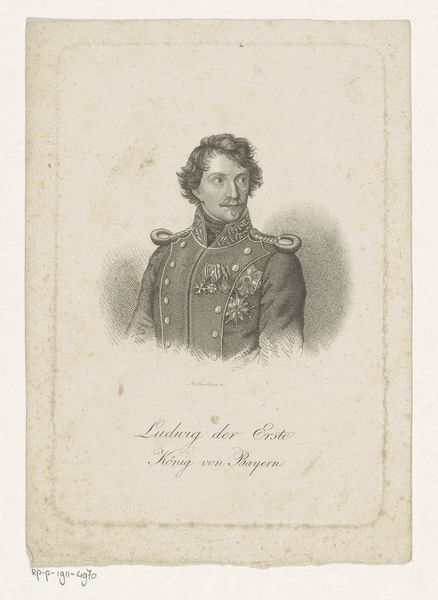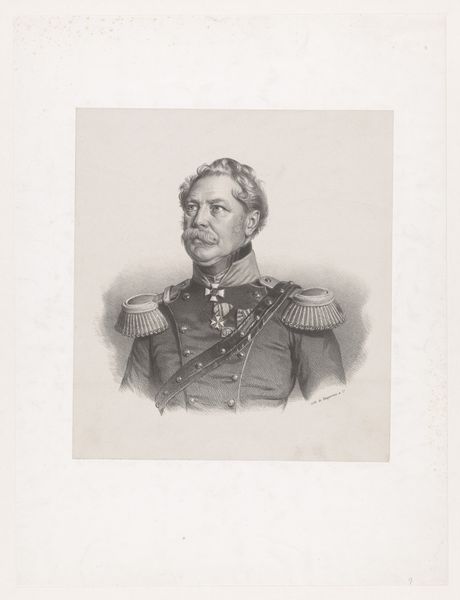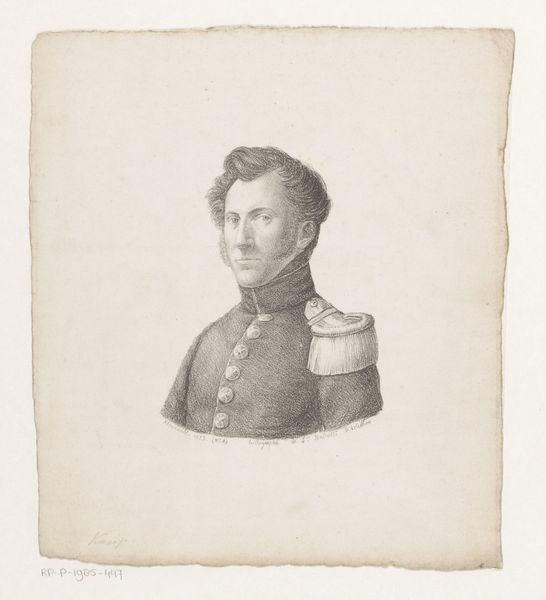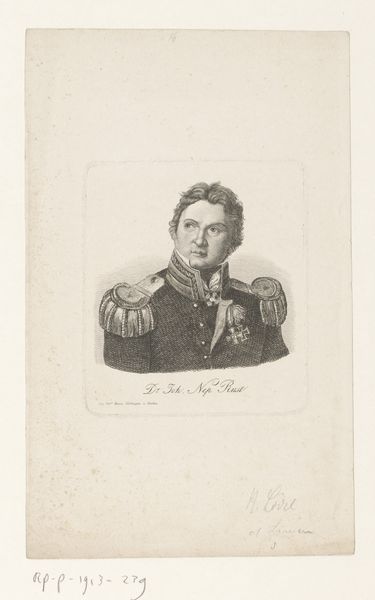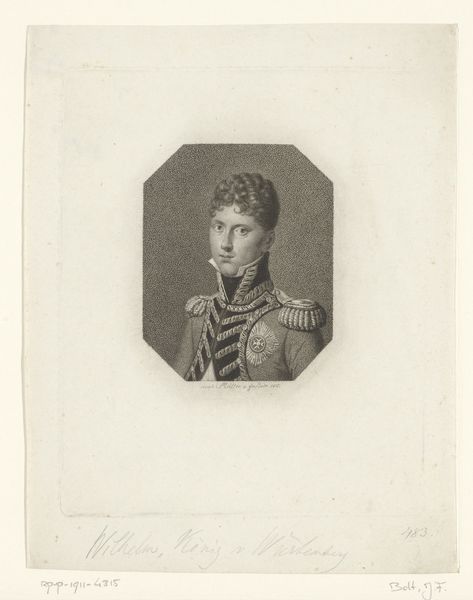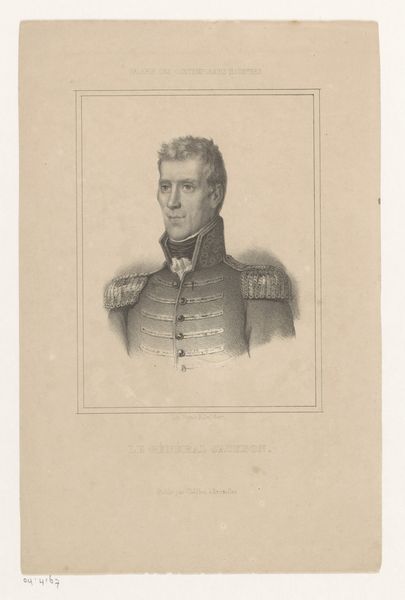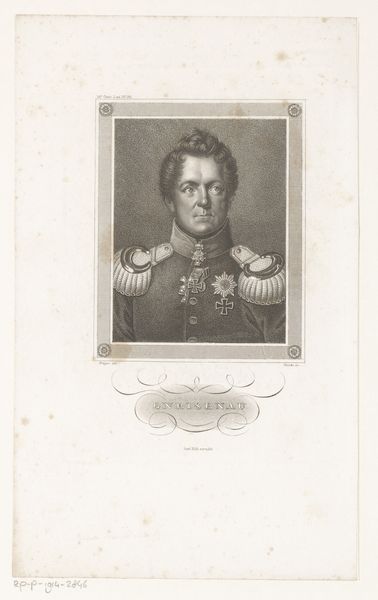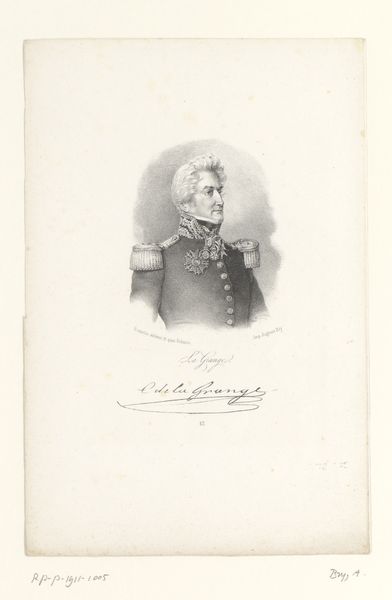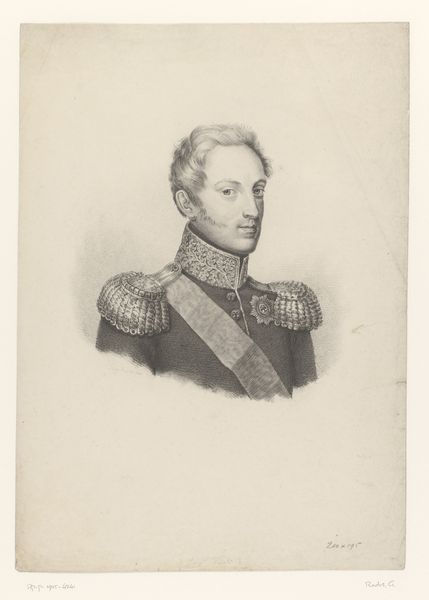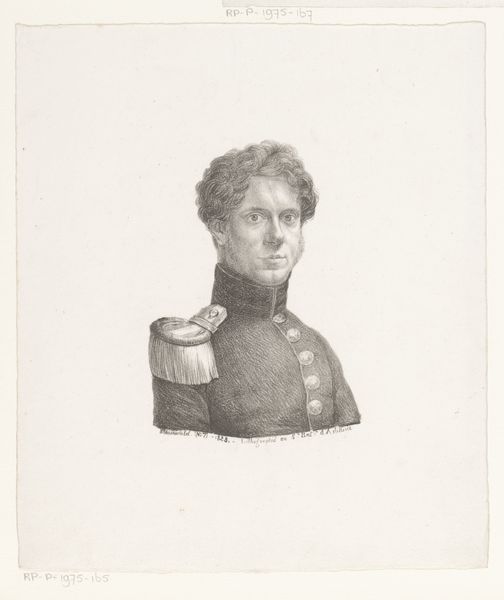
drawing, pencil
#
pencil drawn
#
drawing
#
neoclacissism
#
light pencil work
#
pencil sketch
#
portrait reference
#
pencil drawing
#
pencil
#
limited contrast and shading
#
portrait drawing
#
pencil work
#
tonal art
#
remaining negative space
#
realism
Dimensions: height 213 mm, width 158 mm
Copyright: Rijks Museum: Open Domain
Editor: This is "Portrait of Arnold Willem de Bruin," a pencil drawing created in 1823 by Christian Heinrich Gottlieb Steuerwald. The detail is impressive, and the subject's gaze feels very direct. What strikes you most about this piece? Curator: Immediately, I am drawn to the almost severe formality, offset by the softness of the pencil. Military portraits, especially in this Neoclassical period, served a distinct purpose. Think about the epaulettes and the buttons – they signify status, power, and loyalty. But what about the eyes? Do they suggest anything beyond rank? Editor: I see a kind of stoicism, but also a hint of…melancholy, perhaps? Curator: Interesting. Perhaps Steuerwald captured not just the *idea* of a military man, but also a human being grappling with the weight of duty. Consider the historical context – the Napoleonic wars had just ended. Military service carried very real emotional burdens. Could this image be hinting at something beyond mere representation? How do we reconcile that quiet emotional complexity with the visual language of power and authority? Editor: So, it’s a negotiation between public image and private feeling, symbolized in the visual choices? Curator: Precisely. The soft lines of the pencil create a sense of vulnerability that a more rigid, formal style might have suppressed. It reminds us that even in official portraiture, artists can encode deeper truths about the human condition. Editor: That really changes how I see it. It's not just a portrait of a soldier; it's a window into a complex individual at a specific moment in time. Curator: Exactly! The layering of symbolic language and realistic rendering helps us access a richer understanding of both the sitter and the era.
Comments
No comments
Be the first to comment and join the conversation on the ultimate creative platform.
